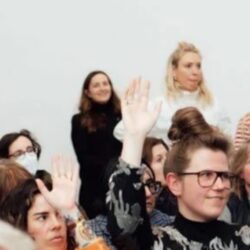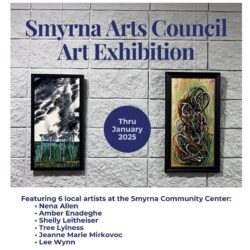
Reprinted from Sustainability-Times
As diverse sustainability advocates strive to save the planet, a group of actors stands out from the crowd in its approach to the challenge. And the potential of visions and solutions this group offers may be no less transformative than the purely science-driven or policy-based methods we are well used to. Here come sustainability artists and art-science innovators, trespassing the boundaries of the possible.
Artistic communities have been exploring human-nature interactions since the dawn of mankind, yet rapid environmental change has sparked a renewed interest in the issue. Some artists focus on their work’s sustainable materials or properties, while others put all the efforts into evoking particular feelings, delivering the message or discovering new sustainable futures. Their contributions vary widely, ranging from purely aesthetic explorations of vanishing biodiversity to confident manifestos and art-science innovations that bring about social change.
Yes, Naturally, an exhibition featured at the Gemeentemuseum in Hague, Netherlands, is among the most interesting creative explorations into the issue, focusing on how technology, culture and nature co-evolve together. Among the works of 80 artists on display you could witness mobile phones replacing human memories and online networks serving as our habitats, or biotope.
Human nature merges with technology as nanoparticles become organic parts of our bodies, while wild nature embraces technological intervention in a huge waterlily by Keith Edmier, combining polyester, silicon and natural flower pollen. Even in pristine form, nature continues to shrink its opportunities, as resembled by Mark Dion’s “Mobile wilderness” – the statue of a wild wolf on a small piece of land in a car trailer, an animal with once large populations that has now been almost driven to extinction in most of its former habitats.
As science and art dive deeper into the wonders of nature, they often start to intersect, particularly in fields that require both types of expertise. One outstanding example is work done by Neri Oxman from MIT, a designer, artist and architect with deep knowledge of synthetic biology and material engineering. Oxman is a founder of material ecology, a field focusing on collaborative co-creation of architectural and design outcomes by humans with other forms of life through the help of computing.
Her contributions to the field of environmental design trespass the boundaries between culture, nature and technology through projects like Silk Pavilion, an architectural form combining robot-built structures with silk created by worms on a nylon frame. Another example is Synthetic Apiary, an installation exploring the behavior of bees in an indoor environment; for example by revealing how bees build hives on diverse types of structures. These kinds of experiments further allow Oxman to create fiberbots that collaborate like insects, building large installations from the ground-up, or invent self-growing and living clothes and buildings.
Oxman’s work is deeply rooted in a philosophy that turns away from treating matter as a resource to be consumed and wasted towards a treatment of it as a biological resource that can be transformed, contributing to the further unfolding of life in a multitude of ways. This brings us to her ambitious suggestion on moving from “design inspired by nature to nature inspired by design”.
Another transdisciplinary art-scientist, working within biochemistry, engineering and experimental design for social change is Natalie Jeremijenko, who has opened an Environmental Health Clinic, which helps people with recipes on what can be done to improve their local environment through small artistic interventions like creating noticeable and subversive urban gardens on the car parking spaces.
An intensifying communication between art and science has also led to emergence of projects like Dance your PhD by the journal Science, where scientists are invited to communicate their findings in an original interpretative dance, stepping outside the box of the usual peer-reviewed publishing. The competition has recently celebrated its 11th anniversary and has over years featured a lots of sustainability related projects on issues like star ecology, changes in sea ice cover and impact of tornadoes on plant-soil feedbacks among others.
Finally, when art and science unite, it’s much easier to create integrative narratives that can speak to a wide range of audience members, like The Human Quest book by sustainability researcher Johan Rockström and renowned photographer Mattias Klum, bringing together the scientific and the imaginary behind the planet at the edge of multiple ecological regime shifts. These kinds of communicative practices can be invaluable in turning harsh scientific facts into livable and vivid realities that people can understand and embrace.





